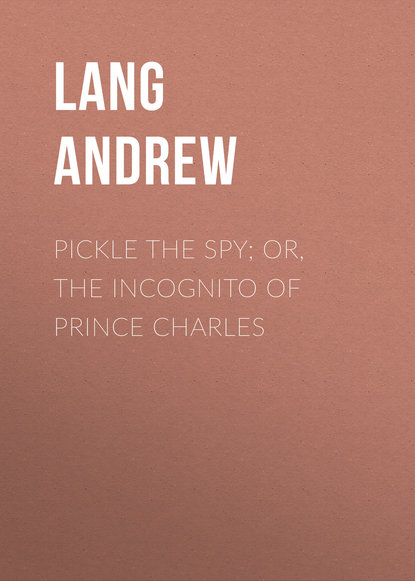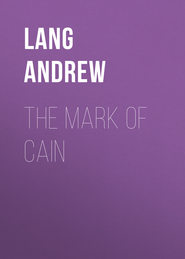По всем вопросам обращайтесь на: info@litportal.ru
(©) 2003-2024.
✖
Pickle the Spy; Or, the Incognito of Prince Charles
Настройки чтения
Размер шрифта
Высота строк
Поля
Of Charles we need say little more. Macallester represents him as hanging about the coasts of England in 1761–1762, looking out for favourable landing-places, or sending his valet, Stuart, to scour Paris in search of Miss Walkinshaw. That luckless lady fled from Charles at Bouillon to Paris in July 1760, with her daughter, and found refuge in a convent. As Lord Elcho reports her conversation, Charles was wont to beat her cruelly. For general circulation she averred that she and James merely wished her daughter to be properly educated. [222 - Mémoire of Charlotte Stuart. 1774.]
Charles, in fact, picked a new quarrel with France on the score of his daughter. Louis refused to make Miss Walkinshaw (now styled Countess of Albertroff) resign her child to Charles’s keeping. He was very fond of children, and Macallester, who hated him, declares that, when hiding in the Highlands, he would amuse himself by playing with the baby of a shepherd’s wife. None the less, his habits made him no proper guardian of his own little girl. [223 - Charles, as Lumisden writes (December 3, 1760), ‘positively insists on having the young filly returned to him.’] In 1762, young Oliphant of Gask, who visited the Prince at Bouillon, reports that he will have nothing to do with France till his daughter is restored to him. He held moodily aloof, and then the Peace came. Lumisden complains that ‘Burton’ (the Prince) is ‘intractable.’ He sulked at Bouillon, where he hunted in the forests. Here is a sad and tender admonition from Murray, whose remonstrances were more softly conveyed than those of Goring:
‘Thursday.
‘When I have the honour of being with you I am miserable, upon seeing you take so little care of a health which is so precious to every honest man, but more so to me in particular, because I know you, and therefore can’t help loving, honouring, and esteeming you; but alass! what service can my zeal and attachment be to my dear master, unless he lays down a plan and system, and follows it, such as his subjects and all mankind will, and must approve of.’
Young Gask repeats the same melancholy tale. Charles was hopeless. For some inscrutable reason he was true to Stafford (who had aided his secret flight from Rome in 1744) and to Sheridan, supporting them at Avignon.
‘Old Mr. Misfortunate’ (King James) died at Rome it 1766; he never saw his ‘dearest Carluccio’ after the Prince stole out of the city, full of hope, in 1744 —
‘A fairy Prince with happy eyes
And lighter-footed than the fox.’
James expired ‘without the least convulsion or agony,’ says Lumisden, ‘but with his usual mild serenity in his countenance… He seemed rather to be asleep than dead.’ A proscribed exile from his cradle, James was true to faith and honour. What other defeated and fugitive adventurer ever sent money to the hostile general for the peasants who had suffered from the necessities of war?
On January 23, 1766, Lumisden met Charles on his way to Rome. ‘His legs and feet were considerably swelled by the fatigue of the journey. In other respects he enjoys perfect health, and charms every one who approaches him.’ The Prince was ‘miraculously’ preserved when his coach was overturned on a precipice near Bologna. Some jewels and family relics had not been returned by Cluny, and there were difficulties about sending a messenger for them: these occupy much of Lumisden’s correspondence.
Charles met only with ‘mortifications’ at Rome. The Pope dared not treat him on a Royal footing. In April 1766, our old friend, Lochgarry, took service with Portugal. Charles sent congratulations, ‘and doubts not your son will be ready to draw the sword in his just Cause.’ The sword remained undrawn. Charles had now but an income of 47,000 livres; he amused himself as he might with shooting, and playing the French horn! He never forgave Miss Walkinshaw, whom his brother, the Cardinal, maintained, poorly enough. Lumisden writes to the lady (July 14, 1766): ‘No one knows the King’s temper better than you do. He has never, so far as I can discover, mentioned your name. Nor do I believe that he either knows where you are, nor how you are maintained. His passion must still greatly cool before any application can be made to him in your behalf.’
A report was circulated that Charles was secretly married to Miss Walkinshaw. On February 16, 1767, Lumisden wrote to Waters on ‘the dismal consequences of such a rumour,’ and, by the Duke of York’s desire, bade Waters obtain a denial from the lady. On March 11 the Duke received Miss Walkinshaw’s formal affidavit that no marriage existed. ‘It has entirely relieved him from the uneasiness the villainous report naturally gave him.’ On January 5, 1768, Lumisden had to tell Miss Walkinshaw that ‘His Royal Highness insists you shall always remain in a monastery.’ Lumisden was always courteous to Miss Walkinshaw. Of her daughter he writes: ‘May she ever possess in the highest degree, those elegant charms of body and mind, which you so justly and assiduously cultivate… Did the King know that I had wrote to you, he would never pardon me.’
On December 20, 1768, Charles had broken with Lumisden and the rest of his suite. ‘Our behaviour towards him was that of faithful subjects and servants, jealous at all times to preserve his honour and reputation.’ They had, in brief, declined to accompany Charles in his carriage when his condition demanded seclusion. Lumisden writes (December 8, 1767), ‘His Royal Highness’ (the Duke of York) ‘thanked us for our behaviour in the strongest terms.’
We need follow no further the story of a consummated degradation. Charles threw off one by one, on grounds of baseless suspicion, Lord George Murray, Kelly (to please Lord Marischal), Goring, and now drove from him his most attached servants. He never suspected Glengarry. But neither time, nor despair, nor Charles’s own fallen self could kill the loyalty of Scotland. Bishop Forbes, far away, heard of his crowning folly, and – blamed Lumisden and his companion, Hay of Restalrig! When Charles, on Good Friday, 1772, married Louise of Stolberg, the remnant of the faithful in Scotland drank to ‘the fairest Fair,’ and to an heir of the Crown.
‘L’Écosse ne peut pas te juger: elle t’ aime!’
Into the story of an heir, born at Sienna, and entrusted to Captain Allen, R.N., to be brought up in England, we need not enter. In Lord Braye’s manuscripts (published by the Historical MSS. Commission) is Charles’s solemn statement that, except Miss Walkinshaw’s daughter, he had no child. The time has not come to tell the whole strange tale of ‘John Stolberg Sobieski Stuart and Charles Edward Stuart,’ if, indeed, that tale can ever be told. [224 - The article on the Tales of the Century in the Quarterly Review (vol. lxxxi. p. 57) was not ‘by Lockhart,’ as Mr. Ewald says, and is not, in fact, accurate.] Nor does space permit an investigation of Charles’s married life, of his wife’s elopement with Alfieri, and of the last comparatively peaceful years in the society of a daughter who soon followed him to the tomb. The stories about that daughter’s marriage to a Swedish Baron Roehenstart, and about their son, merit no attention. In the French Foreign Office archives is a wild plan for marrying the lady, Charlotte Stuart, to a Stuart – any Stuart, and raising their unborn son’s standard in the American colonies! That an offer was made from America to Charles himself, in 1778, was stated by Scott to Washington Irving on the authority of a document in the Stuart Papers at Windsor. That paper could not be found for Lord Stanhope, nor have I succeeded in finding it. The latest Scottish honour done to the King was Burns’s ‘Birthday Ode’ of 1787, and his song for ‘The Bonny Lass o’ Albany.’
‘This lovely maid’s of royal blood,
That rulèd Albion’s kingdoms three,
But oh, alas for her bonnie face!
They hae wrang’d the lass of Albanie!’
Tout finit par des chansons!
Of the Stuart cause we may say, as Callimachus says of his dead friend Heraclitus:
‘Still are thy pleasant voices, thy nightingales awake,
For death takes everything away, but these he cannot take.’
A hundred musical notes keep green the memory of the last Prince of Romance, the beloved, the beautiful, the brave Prince Charlie —everso missus succurrere saeclo. The overturned age was not to be rescued by charms and virtues which the age itself was to ruin and destroy. Loyal memories are faithful, not to what the Prince became under stress of exile, and treachery, and hope deferred, and death in life, de vivre et de pas vivre– but to what he once was, Tearlach Righ nan Gael.
Of one character in this woful tale a word may be said. The Princesse de Talmond was visited by Horace Walpole in 1765. He found her in ‘charitable apartments in the Luxembourg,’ and he tripped over cats and stools (and other things) in the twilight of a bedroom hung with pictures of Saints and Sobieskis. At last, and very late, the hour of her conversion had been granted, by St. François Xavier, to the prayers of her husband. We think of the Baroness Bernstein in her latest days as we read of the end of the Princesse. She had governed Charles ‘with fury and folly.’ Of all the women who had served him – Flora Macdonald, Madame de Vassé, Mademoiselle Luci, Miss Walkinshaw – did he remember none when he wrote that he understood men, but despaired of understanding women, ‘they being so much more wicked and impenetrable’? [225 - Nothing in the Stuart Papers confirms the story that Charles was at the Coronation of George III., in 1761. In the present century Cardinal York told a member of the Stair family that the Prince visited England in 1763. It may have been then that he saw Murray of Broughton, and was seen by Murray’s child, afterwards the actor known to Sir Walter Scott.]
notes
1
Edition of 1832, i. p. x.
2
History of England from the Peace of Utrecht to the Peace of Aix-la-Chapelle. London, 1838, iii. 279.
3
An authentic account of the conduct of the Young Chevalier, p. 7. Third edition, 1749.
4
London, 1879.
5
Letters from Italy by an Englishwoman, ii. 198. London 1776. Cited by Lord Stanhope, iii. 556. Horace Mann to the Duke of Newcastle. State Papers. Tuscany. Jan. ½½, 174¾. In Ewald, i. 87. Both authorities speak of blue eyes.
6
A false Charles appeared in Selkirkshire in 1745. See Mr. Craig Brown’s History of Ettrick Forest. The French, in 1759, meant to send a false Charles to Ireland with Thurot. Another appeared at Civita Vecchia about 1752. The tradition of Roderick Mackenzie, who died under English bullets, crying ‘You have slain your Prince,’ is familiar. We shall meet other pseudo-Charles’s.
7
Ewald, i. 41.
8
Documentos Ineditos. Madrid. 1889. Vol. xciii. 18.
9
Voyages de Montesquieu. Bordeaux, 1894. p. 250.
10
Letters of De Brosses, as translated by Lord Stanhope, iii. 72.
11
See authorities in Ewald, i. 48–50.
12
Ewald, ii. 30. Scott’s Journal, i. 114.
13











